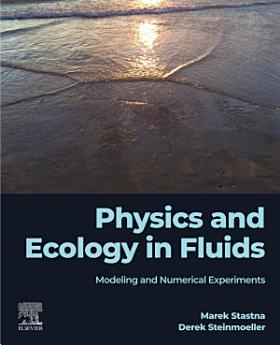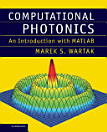Physics and Ecology in Fluids: Modeling and Numerical Experiments
Feb 2023 · Elsevier
Ebook
280
Pages
family_home
Eligible
info
reportRatings and reviews aren’t verified Learn More
About this ebook
Physics and Ecology in Fluids: Modeling and Numerical Experiments develops mathematical and numerical modeling methodologies for coupled biological-hydrodynamic problems with a focus on process studies. The modeling is presented in a way that discusses mathematical background but does not depend on a large body of mathematical pre-requisites or experience. Models are built up from simple, to complex. This includes discussion of approximations and shortcuts commonly made by large computational models for natural bodies of water. Computational approaches are presented using conceptual explanations and pseudo-code along with well-documented, open-source code. Over a dozen codes that run locally on the reader's laptop provide hands on experience with various aspects of the modeling process and its scientific results. One large-scale code for basin scale modeling based on the Discontinuous Galerkin methodology is presented, along with a self-contained discussion of theoretical background and implementation details. Physics and Ecology in Fluids is written for graduate students, academic researchers and government scientists. Professors can use the book as a stand-alone resource for a one term graduate course, or to supplement teaching of their own graduate courses. All readers may also use the book as background/user's guide for the software included with the book. - Presents accessible codes along with clear explanations of the mathematical modeling process that leads up to the code - Provides a consistent development of the mathematical models for hydrodynamic and biological modeling, which are rarely covered together - Includes an informal, discussion-style tone throughout, but with serious applied mathematics content, allowing a level of detail relevant for multiple reader types
About the author
Marek Stastna is a professor in the mathematics department at the University of Waterloo. His primary research interest is the motion of stratified fluid mechanics, such as lakes, the coastal ocean and the atmosphere. He is part of the Environmental and Geophysical Fluid Mechanics group. He works on the simulation of stratified, natural waters. This includes fundamental work on hydrodynamics instabilities, bottom boundary layers and mixing, as well as more applied work on lake scale circulation. Professor Stastna has been actively involved in the building of several numerical models, using pseudospectral and finite element methodologies. He has published numerous articles and book chapters.Derek Steinmoeller is a Scientist and Senior Software Developer at Aquanty. His main interests lie in numerical solutions of equations of fluid flow in lakes under the effects of rotation, density stratification, and weak vertical accelerations. He is also a full-time senior software developer in a technology hub located in Waterloo region, Canada with more than six years of employment. He has experience in both traditional numerical modelling software, and more modern software architecture and design patterns in monolithic web applications that lay the groundwork for writing robust and maintainable code for any application area. He Developed an open-source suite of mathematical model solvers for a variety of application areas to be run on High-Performance Computing architectures.
Rate this ebook
Tell us what you think.
Reading information
Smartphones and tablets
Install the Google Play Books app for Android and iPad/iPhone. It syncs automatically with your account and allows you to read online or offline wherever you are.
Laptops and computers
You can listen to audiobooks purchased on Google Play using your computer's web browser.
eReaders and other devices
To read on e-ink devices like Kobo eReaders, you'll need to download a file and transfer it to your device. Follow the detailed Help Center instructions to transfer the files to supported eReaders.






